Phone:
TBA
Physical address:
TBA
Scaffolding for Painting – You’ll need the right scaffolding to ensure a safe and efficient painting project. Supported scaffolding, rolling scaffolds, and scaffold towers are great options. They provide better access and enhance safety, letting you achieve a professional finish. When choosing scaffolding, consider your project’s height and location. Always assemble and inspect the scaffold properly to avoid accidents. For DIY enthusiasts, portable and sectional scaffolding offers flexibility. If you’re unsure whether to rent or buy, consider how often you’ll use it and your storage space. Understanding these options can help your decision-making process. Keep exploring for detailed tips and insights.
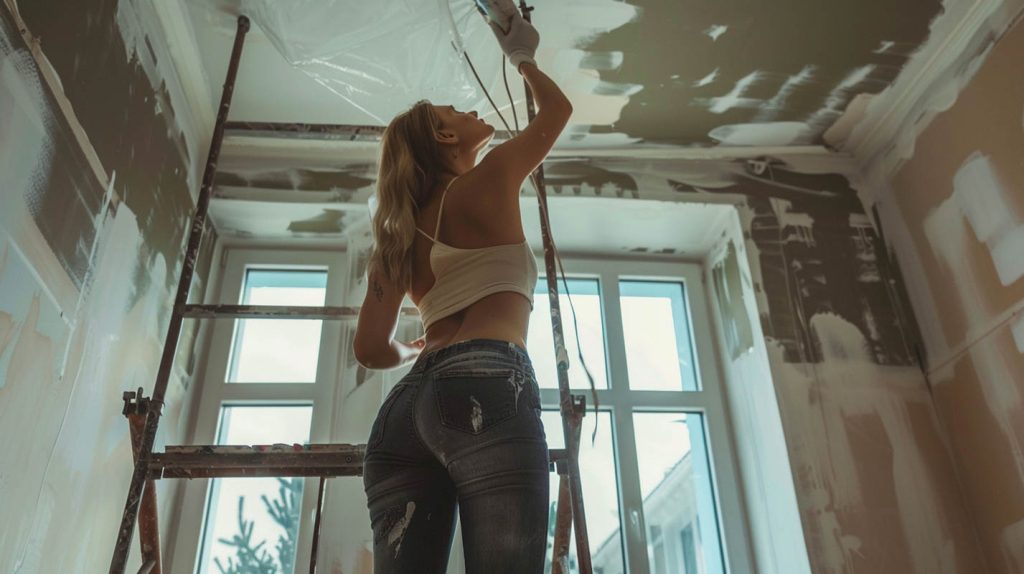
There are several types of scaffolding you’ll need to consider for your painting project. Choosing the right one can make a significant difference in terms of safety, efficiency, and ease of use. Let’s dive into the most common types you might come across.
First, there’s the supported scaffolding. This is the most commonly used type and consists of one or more platforms supported by rigid, load-bearing legs. It’s ideal for outdoor projects where you have a flat, stable surface.
Next up is suspended scaffolding. This type hangs from the roof or upper structure by ropes or cables. It’s perfect for high-rise buildings and projects where the ground space is limited. You can adjust its height easily, which makes it versatile for different levels of a structure.
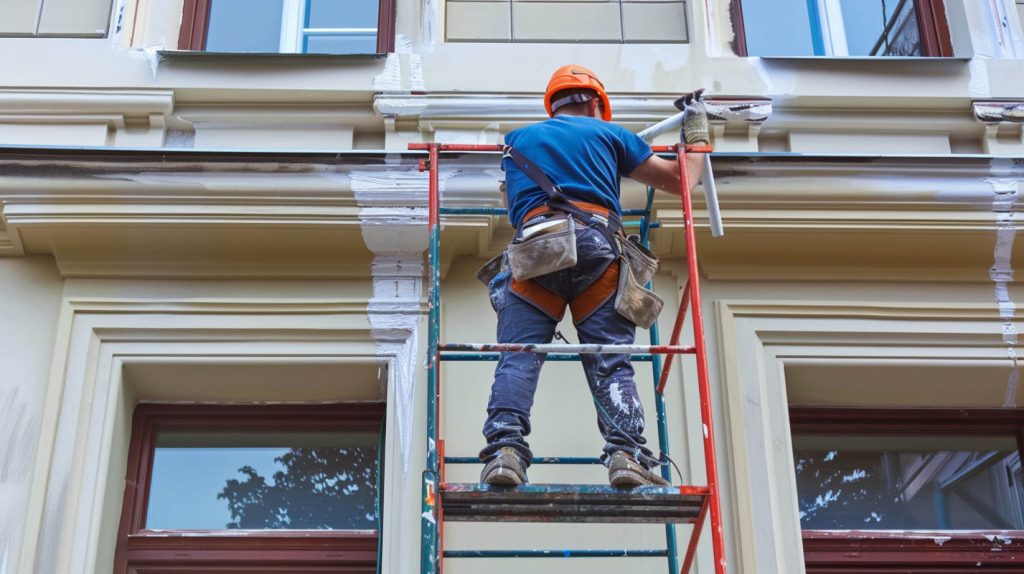
Rolling scaffolding is another handy option. It’s basically supported scaffolding on wheels. The wheels make it easy to move around, which is great if your project covers a large area. Just make sure to lock the wheels when you’re working to prevent any unwanted movement.
For smaller projects or areas with limited space, consider using scaffold towers. These are like mini supported scaffolds but are more compact. They often come with built-in ladders, making them convenient for indoor painting tasks.
Finally, there’s aerial lifts, which include cherry pickers and boom lifts. These are motorized and can be maneuvered easily, making them suitable for both indoor and outdoor projects.
Each type of scaffolding has its own set of advantages and is suited for different kinds of projects. By understanding these options, you can choose the one that best fits your specific needs, ensuring a smoother and safer painting experience.
Using scaffolding for your painting project offers numerous benefits that enhance both safety and efficiency. One of the primary advantages is the significant improvement in safety compared to using ladders or other makeshift solutions. Scaffolding provides a stable and secure platform, reducing the risk of falls and injuries. This stability is crucial, especially when working at heights or for extended periods.
Another benefit is the increase in productivity. With scaffolding, you can easily move around large sections of a wall or ceiling without repeatedly climbing up and down a ladder. This not only saves time but also reduces physical strain, enabling you to work longer and more comfortably.
Scaffolding also allows for better access to difficult-to-reach areas. Whether you’re painting high ceilings, stairwells, or the exterior of a multi-story building, scaffolding provides the necessary reach and flexibility. This ensures a more thorough and consistent paint job, leading to a more professional finish.
Here’s a quick rundown of the benefits:
After understanding the benefits of using scaffolding, the next step is to choose the right type for your painting project. First, consider the height you need to reach. If you’re painting a single-story house, a basic frame scaffold might suffice. However, for multi-story buildings, a more robust system like a suspended or rolling scaffold might be necessary.
Next, think about the terrain and environment where you’ll be working. If you’re painting on uneven ground, adjustable base plates or leveling jacks are crucial for stability. For indoor projects, a rolling scaffold with lockable wheels can make moving around easier. Outdoor projects, especially those on sloped or rugged terrain, might require a more stable, fixed scaffold system.
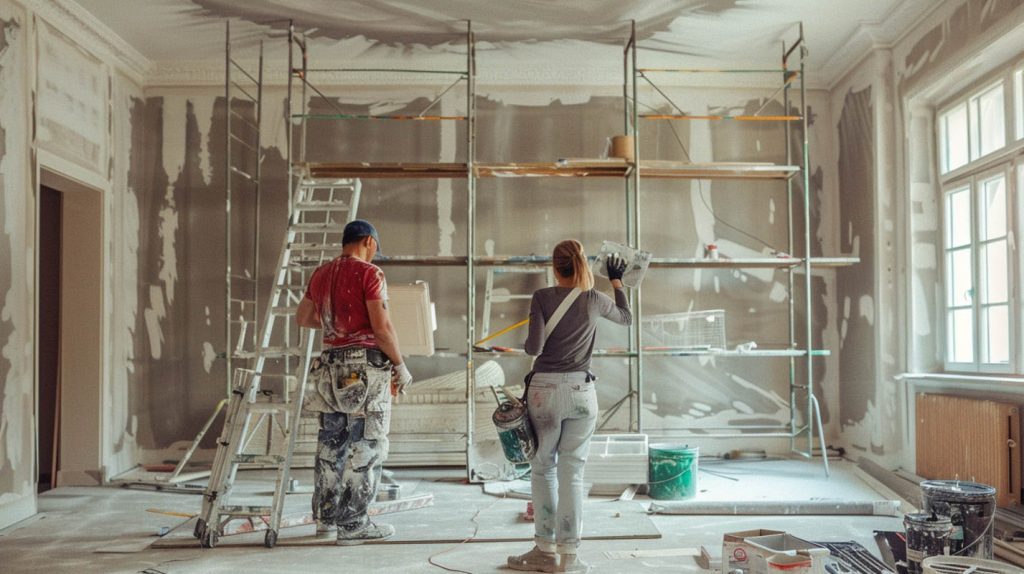
You should also consider the weight capacity. Calculate the combined weight of the workers, tools, and materials that will be on the scaffold. Make sure the scaffold you choose can handle this load comfortably. Overloading a scaffold can lead to dangerous situations.
Ease of assembly and disassembly is another key factor. Some scaffolding systems are designed for quick setup, which can save you time and effort. If you’re working on a tight schedule, this feature can be a significant advantage.
Ensuring safety during scaffolding assembly starts with a thorough inspection of all components before you begin. Check for any signs of damage, rust, or wear and tear. If any part looks compromised, it’s better to replace it than risk an accident. Always keep a range of replacement parts for your foldable scaffold on hand. Once you’ve confirmed all parts are in good condition, you can start the assembly process.
Begin by placing the base plates on a level surface. This ensures stability and prevents the structure from tilting. Assemble the scaffolding frame by connecting the vertical and horizontal bars securely. As you build upwards, make sure each section of your product is firmly locked into place before adding the next.
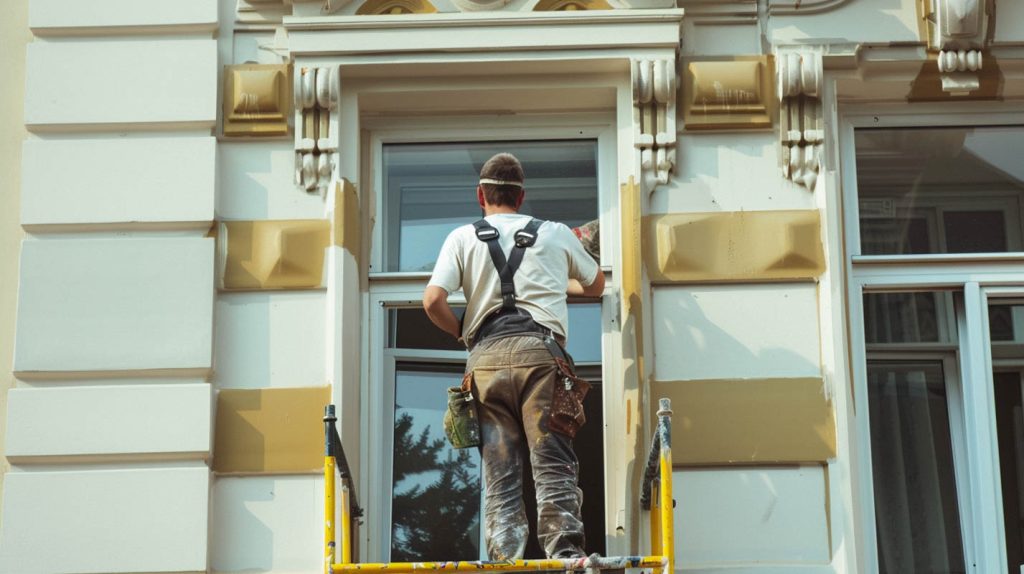
When you’re working at height, it’s crucial to maintain your balance and avoid overreaching. Always use guardrails and midrails to prevent falls. Here are some key points to keep in mind:
As you assemble, regularly check each connection and joint to ensure they remain tight and secure. Don’t rush through the process—taking your time can prevent accidents. Once the scaffolding is fully assembled, do a final inspection to verify everything is stable and secure before you start painting. Attention to detail at this stage sets the foundation for a safe and smooth painting project.
Once your scaffolding is assembled, it’s vital to follow some key safety tips to maintain a secure working environment. Neglecting these precautions can lead to serious accidents, so let’s dive into some essential practices.
First, always inspect the scaffolding before use. Look for any visible damage or wear on your ladders and scaffolds and ensure all components are securely fastened. If you notice anything amiss, address it immediately before proceeding.
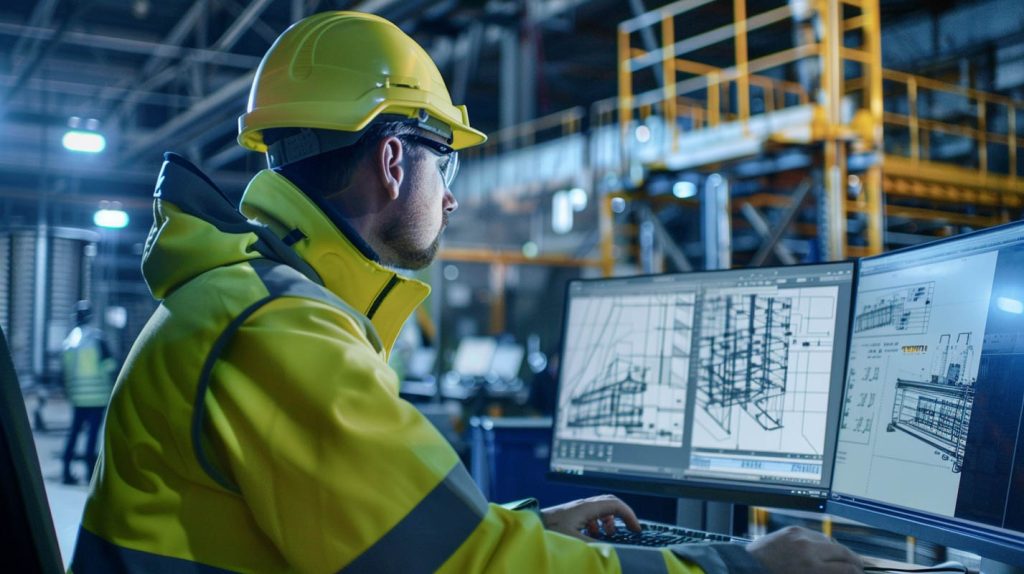
Second, make sure the scaffolding is placed on a stable and level surface. Uneven ground can cause the structure to become unsteady, increasing the risk of falls. You might need to use base plates or mud sills to stabilize the foundation.
Third, never overload the scaffolding. Every scaffold has a maximum load capacity, including workers, tools, and materials. Exceeding this limit can compromise its integrity. Always distribute the weight evenly to prevent tipping.
Fourth, use guardrails and toe boards. These are crucial in preventing falls and ensuring a safe workspace. They provide a barrier that can stop you from accidentally stepping off the edge.
Finally, practice safe climbing. Use the designated access points, such as ladders or stair towers, and maintain three points of contact (two hands and one foot, or two feet and one hand) while climbing. Go back to Scaffold for Hire Home Page.
When choosing scaffolding materials for painting, you’ll need to consider whether metal or wood scaffolds suit your project best. Additionally, selecting the right scaffold planks is crucial for stability and safety. Always ensure that your materials comply with safety standards to prevent accidents and ensure a smooth workflow. For instance, using a width aluminium foldable mobile scaffold can offer both convenience and safety.
Choosing between metal and wood scaffolds depends largely on the specific requirements of your painting project. Metal scaffolds, typically made from aluminum or steel, offer durability and high weight capacity. They’re resistant to weather conditions, making them suitable for outdoor projects. On the other hand, wood scaffolds can be more affordable and accessible, especially for smaller, indoor tasks. Consider the product that best suits the width and height requirements of your project.
When deciding, consider these factors:
Ultimately, your choice will depend on balancing these factors against the specific demands of your painting project. Whether you prioritize longevity, cost, or ease of use, both materials have their unique advantages and limitations.
Selecting the right scaffold planks is crucial for ensuring both safety and efficiency in your painting project. When you’re choosing planks, consider the material options available. Wood, aluminum, and steel are the most common choices, each with its own set of advantages.
Wooden planks are traditional and affordable. They provide good traction, which helps prevent slips, but they can warp over time and require regular inspection for cracks and splits. Plywood is a popular choice among wooden planks due to its strength and durability.
Aluminum planks are lightweight and resistant to corrosion, making them excellent for outdoor projects. They’re easy to handle and transport, but they can be slippery, so opt for those with a non-slip surface.
Steel planks are the most durable and can handle heavy loads, making them ideal for larger projects that require a robust product like an aluminium foldable mobile scaffold tower. However, they are heavier and more cumbersome to move around. Steel planks often come with perforations for better grip and drainage, which is an added safety feature.
Ultimately, your choice will depend on your specific needs, the project’s scale, and the working environment. Carefully weigh these factors to select the best scaffold planks for your painting job.
To ensure your scaffolding setup meets safety standards, you must verify that the materials comply with relevant regulations and guidelines. Different materials are used in scaffolding construction, each with its own safety standards. Ensuring compliance helps prevent accidents and enhances the stability and durability of the scaffold.
When selecting materials, consider the following common options:
Many DIY enthusiasts find that using scaffolding can significantly improve both the safety and efficiency of their painting projects. Forget about balancing on ladders or makeshift platforms; scaffolding provides a stable and spacious work area, allowing you to focus entirely on your painting. You’ll have the freedom to move around without constantly climbing up and down, which saves time and reduces fatigue.
When considering scaffolding for your DIY project, you’ve got options. Portable scaffolding is an excellent choice for smaller projects. It’s lightweight, easy to assemble, and typically comes with lockable wheels for added mobility and stability. This kind of scaffolding is perfect for painting interior walls or ceilings, where you need to maneuver around furniture and other obstacles.
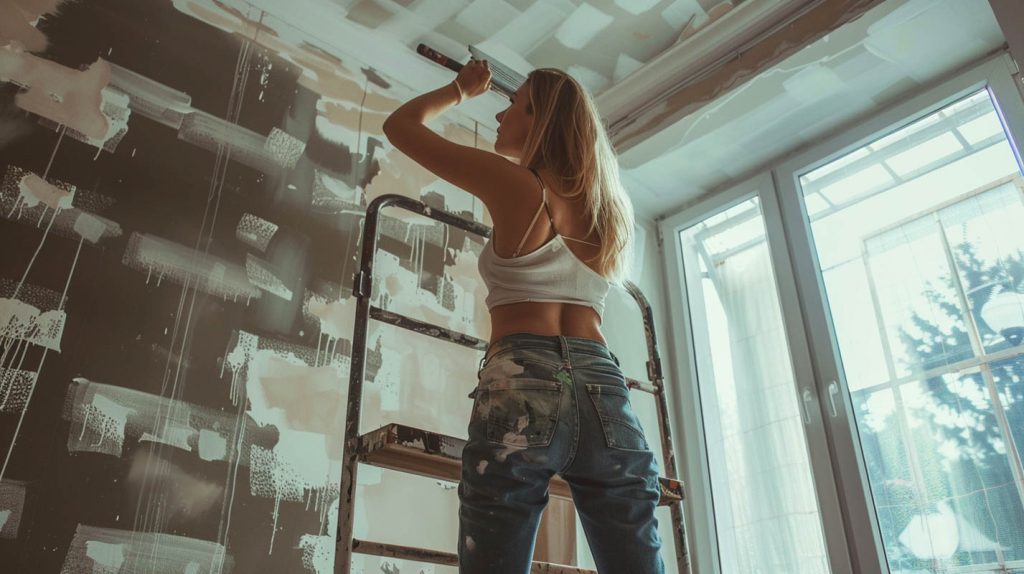
For exterior projects, like painting your home’s façade, consider using a more robust, sectional scaffolding system. These systems can reach greater heights and offer more stable platforms for extensive work. They’re usually made of durable materials like aluminum or steel, ensuring they can handle outdoor conditions. Plus, they’re designed to be easily assembled and disassembled, so you won’t need to be a pro to set them up.
Safety is paramount, so always ensure your scaffolding is properly erected and inspected before starting your work. Use guardrails, toe boards, and harnesses where necessary to prevent falls. Don’t forget to secure the base on level ground and follow the manufacturer’s instructions closely.
If your painting project demands a higher level of complexity or scale, professional scaffolding options such as an aluminium foldable mobile scaffold tower offer the durability and versatility needed to get the job done right. These scaffolding systems are designed to provide a robust, stable platform, ensuring safety and efficiency, especially for larger projects like commercial buildings or multi-story homes. For such projects, a wide range of scaffolding products is available to meet your needs. Here are some key types of professional scaffolding you might consider:
Each type of scaffolding offers unique advantages tailored to specific project needs. Frame scaffolding is a great all-rounder, while system scaffolding provides unparalleled flexibility. Suspended scaffolding is indispensable for high-rise work, and mobile scaffolding simplifies tasks requiring frequent repositioning.
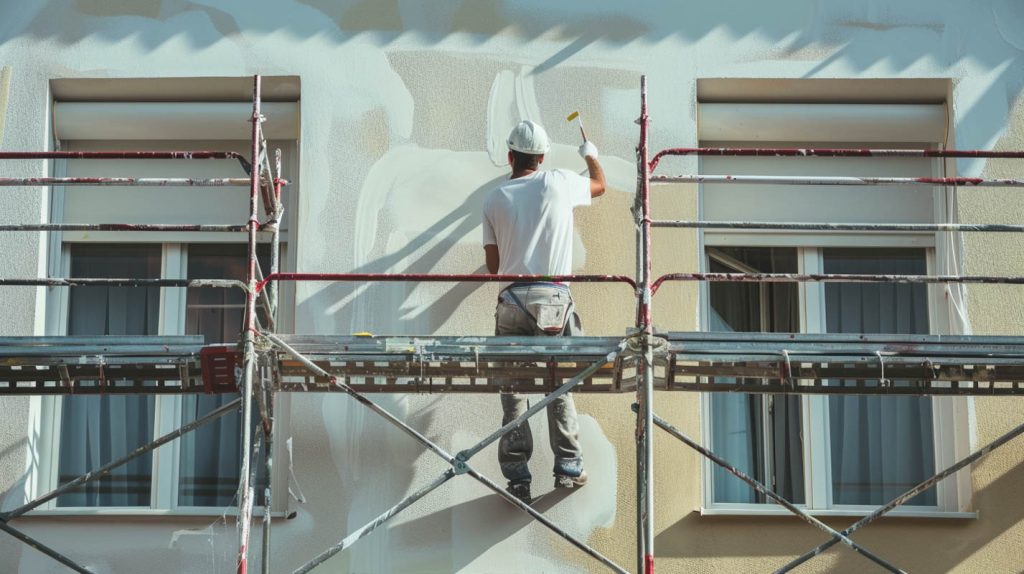
Choosing the right professional scaffolding can significantly impact your project’s success, ensuring you have a safe, efficient, and effective work environment. So, consider your specific needs and project requirements when selecting your scaffolding solution.
When considering scaffolding for your painting project, you’ll need to weigh the cost efficiency of renting versus buying. Renting might save you money upfront, but purchasing could be more economical over repeated use. Don’t forget to factor in maintenance and storage requirements for each option, whether it be ladders and scaffolds or a specific scaffolding product.
Choosing between renting and buying scaffolding for your painting project depends on several cost-related factors. You’ll need to weigh the initial investment, frequency of use, project duration, and potential savings over time. Let’s break it down:
Beyond cost considerations, another important aspect to evaluate is the maintenance and storage of scaffolding, including options like the aluminium foldable mobile scaffold tower, when deciding between renting and buying. If you choose to buy scaffolding, you’ll need to factor in the space required for storage. Scaffolding takes up significant room, and improper storage can lead to damage, reducing its lifespan. You’ll also be responsible for regular maintenance, such as checking for wear and tear, rust, and structural integrity. This can be time-consuming and may require additional tools or expertise.
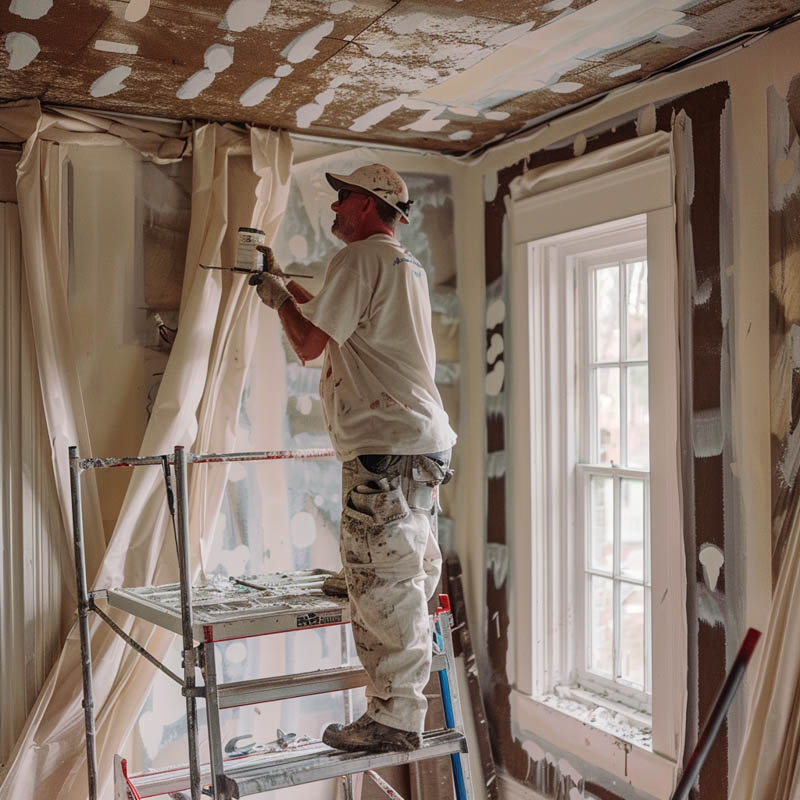
On the other hand, renting scaffolding often includes maintenance in the rental agreement. The rental company typically ensures that the equipment is in good condition before each use, saving you time and effort. Additionally, you won’t need to worry about storage space, as the scaffolding is returned after the job is done. This can be particularly advantageous if you have limited space or don’t plan to use scaffolding frequently.
Proper maintenance and storage of your scaffolding ensure its longevity and safety for future use. If you don’t take care of your scaffolding, it can degrade quickly, leading to potential safety hazards and costly replacements. Regular maintenance isn’t just about keeping it clean; it’s also about ensuring all parts are in good working order.
First, always inspect your scaffolding before and after each use. Look for any signs of damage, such as rust, bent components, or loose fittings. Catching these issues early can prevent accidents and extend the life of your equipment, whether it’s ladders and scaffolds or a specific range of products for your needs.
Second, clean your scaffolding regularly. Paint, dirt, and other debris can accumulate, causing wear and tear. Use a wire brush and mild cleaning solution to remove any buildup. This simple step can make a huge difference in maintaining your scaffolding.
When it comes to storage, consider the following tips:
You need to consider weight limits for scaffolding systems. Light-duty scaffolding supports up to 25 pounds per square foot, medium-duty 50 pounds, and heavy-duty up to 75 pounds. Always check manufacturer guidelines for specific limits.
Weather conditions can significantly impact scaffolding safety. High winds, rain, and ice can make scaffolding slippery and unstable. You should always check weather forecasts and secure or dismantle scaffolding if adverse conditions are expected.
Yes, you can use scaffolding on uneven terrain, but you’ll need to ensure it’s properly leveled and stabilized. Adjustable base plates and screw jacks help, and always double-check safety guidelines before proceeding.
You’ll need to check local regulations, but generally, scaffolding must be inspected before use and periodically during its use. Inspections often require a qualified person to ensure safety standards are met.
Yes, eco-friendly scaffolding options are available. You’ll find scaffolding made from sustainable materials like bamboo and recycled aluminum. These options not only reduce environmental impact but also offer durability and safety for your projects.